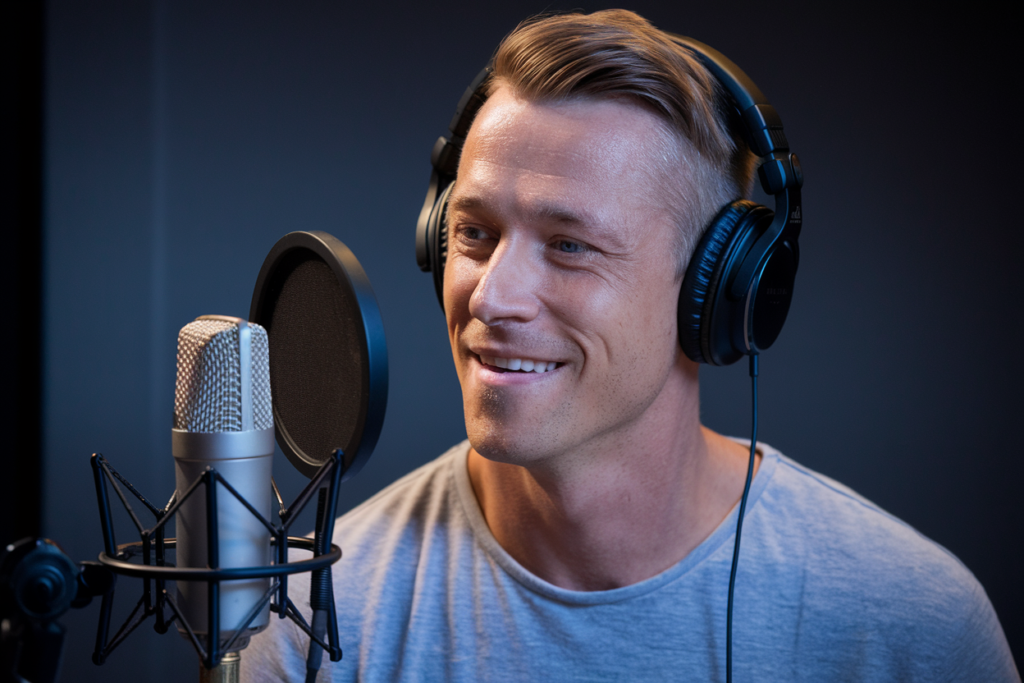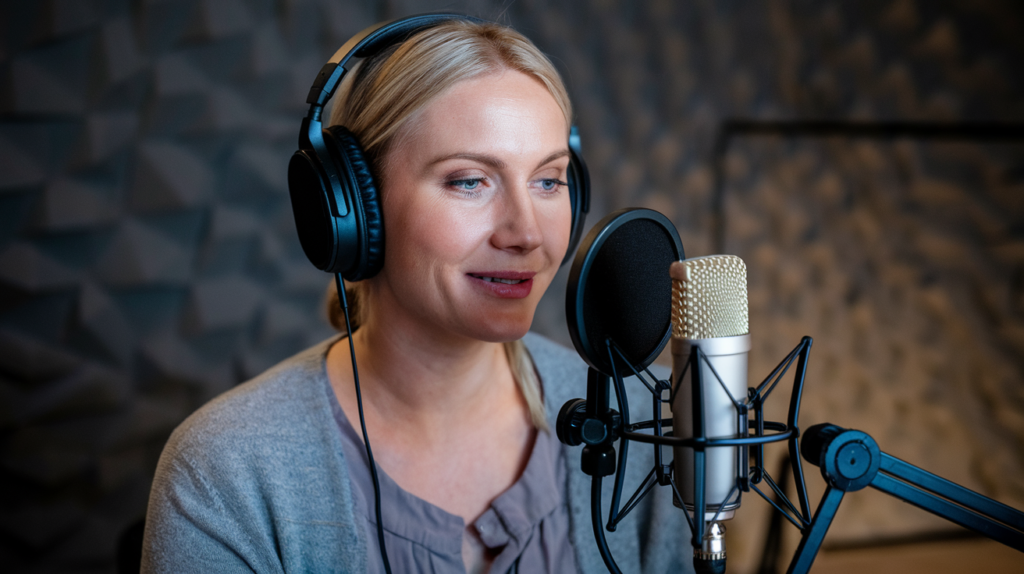Key Takeaways
- Cultural Nuances: Australian English in dubbing incorporates unique expressions, humor, and local slang that resonate with Australian audiences, enhancing authenticity.
- Voice Actor Challenges: Voice actors must master specific language nuances, including pronunciation patterns and idiomatic phrases like “arvo” (afternoon) to create relatable characters.
- Humor and Contextual Adaptation: Successful dubbing requires the ability to convey sarcasm and dry wit while adapting jokes and cultural references relevant to Australian viewers.
- Audience Engagement: Using Australian English increases viewer connection with the content by making dialogue relatable, thereby improving overall audience engagement.
- Enhanced Comprehension: Familiar vocabulary aids comprehension for local audiences, ensuring that key messages are clearly understood without confusion.
- Competitive Advantage: Dubbing in Australian English provides a competitive edge by producing high-quality content tailored specifically for Australian markets.
Ever wondered why Australian English sounds so different in dubbing? It’s not just about accents; it’s a fascinating blend of culture, humor, and local expressions that sets it apart. When films and shows get dubbed into Aussie English, they don’t just translate words—they capture the spirit of Australia.
This uniqueness can create challenges for translators and voice actors alike. How do you maintain authenticity while ensuring the dialogue resonates with local audiences? Dive into the world of Australian English in dubbing and discover how this vibrant language shapes entertainment down under. You’ll see why it matters more than ever in our globalized media landscape.
Uniqueness Of Australian English In Dubbing
Australian English offers a rich tapestry of expressions, humor, and cultural nuances that set it apart in the world of dubbing. When you’re selecting voice talent for projects aimed at Australian audiences, understanding these unique elements is crucial.
Voice actors face specific challenges when adapting scripts. They must capture not just the accent but also local slang and idiomatic phrases that resonate with viewers. For instance, words like “arvo” for afternoon or “bikkie” for biscuit are integral to authentic Australian dialogue. Without these terms, dubbed content may feel flat or disconnected from its audience.
Moreover, the humor embedded in Australian English often relies on sarcasm and dry wit. Voice artists need to convey this tone effectively through their performances. A successful voice over requires more than just reading lines; it demands an ability to embody the spirit of the original material while making it relatable to locals.
Cultural references further complicate matters during dubbing. Many shows include themes or jokes rooted in Australia’s lifestyle and geography—these require careful attention from translators and voiceover talent alike. If done well, this can elevate a project’s appeal significantly.
Embracing the uniqueness of Australian English enriches your dubbing projects. It enhances viewer engagement by ensuring authenticity and relatability in every performance delivered by skilled voice actors who truly understand their audience’s language landscape.
Characteristics Of Australian English
Australian English possesses unique traits that set it apart, particularly in dubbing. These characteristics reflect the culture and humor of Australia, which can enhance viewer engagement.
Pronunciation Features
Australian English features distinct pronunciation patterns. You’ll notice a blend of vowels that creates a signature sound. For example, the short ‘i’ in “fish” sounds more like “fush.” Additionally, many Australians tend to drop the final ‘g’ in words ending with “-ing,” so “running” becomes “runnin’.” This phonetic quality significantly influences voice actors when delivering lines, as capturing these nuances ensures authenticity in voiceovers.
Vocabulary Distinctions
Vocabulary plays a crucial role in differentiating Australian English from other variants. Local slang and colloquialisms are common; for instance, terms like “arvo” for afternoon or “bikkie” for biscuit pepper everyday conversations. Voice artists must integrate such expressions into their performances to resonate with local audiences effectively. Familiarity with these vocabulary distinctions allows voiceover talent to portray characters authentically while ensuring relatability in dubbed content. Understanding this linguistic landscape is vital for any voice actor looking to succeed in adapting material for Australian viewers.
Influence Of Australian Culture On Dubbing
Australian culture significantly shapes the dubbing process, enhancing the authenticity of voiceovers. This influence is evident in how local expressions and humor breathe life into characters, making them relatable to audiences.
Contextual Adaptation
Contextual adaptation plays a crucial role in dubbing for Australian audiences. Voice actors must adjust dialogue to reflect local vernacular and cultural nuances. For example, phrases like “How’s it going?” or “No worries” resonate more than standard English equivalents. By incorporating these expressions, voice talent ensures that viewers feel a connection with the content. Additionally, adapting jokes and references requires careful consideration; what works in one culture might fall flat in another. Voice artists need to infuse performances with an understanding of local sensibilities while preserving the original tone of the material.
Cultural References
Cultural references often define Australian humor and storytelling styles in dubbed content. Themes related to outdoor lifestyles, sporting events, or iconic landmarks appear frequently in media produced for local consumption. A voiceover that captures these elements enhances viewer engagement by grounding narratives within familiar contexts. Moreover, using recognizable names or places adds layers of meaning that enrich dialogues and make them feel authentic to Australian viewers. When voice over talent incorporates these cultural markers skillfully, they create a more immersive experience that resonates deeply with local audiences.
In essence, embracing Australia’s unique cultural landscape not only enriches dubbing projects but also elevates viewer satisfaction through relatable storytelling and genuine performances from skilled voice artists.
Challenges In Dubbing With Australian English
Dubbing with Australian English presents unique challenges that require careful consideration. These difficulties arise from the distinct language nuances and audience preferences.
Language Nuances
Australian English is rich in local slang, idiomatic expressions, and pronunciation patterns. Voice actors face the task of mastering these elements to create authentic voiceovers. For instance, integrating terms like “arvo” for afternoon or “bikkie” for biscuit is essential. Misusing these phrases can lead to misunderstandings or a lack of relatability.
Additionally, phonetic qualities like vowel blending and dropping final ‘g’ sounds demand attention from voice talent. A line spoken by an American character may not resonate with Australian viewers unless it reflects these nuances accurately. The challenge lies in balancing fidelity to the original script while ensuring that it feels natural within an Australian context.
Audience Reception
Audience reception plays a crucial role in dubbing decisions. Viewers often connect deeply with content that speaks their language—literally and culturally. Voice artists must understand the humor, cultural references, and everyday scenarios relevant to Australians to make their performances engaging.
For example, incorporating references to local sports or lifestyle can enhance viewer engagement significantly. If a scene includes a mention of surfing at Bondi Beach or attending an AFL game, having voice actors deliver those lines authentically ensures that audiences feel represented.
The effectiveness of dubbing hinges on how well voice over artists capture both the essence of characters and the cultural backdrop they inhabit. When done right, this connection creates a seamless viewing experience that resonates with audiences across Australia.
Benefits Of Using Australian English In Dubbing
Using Australian English in dubbing offers several advantages that enhance viewer experience and engagement.
Authenticity
Authenticity stands out as a primary benefit of utilizing Australian English. Voice actors who master the accent, slang, and cultural nuances create relatable characters for local audiences. This connection forms a bond between viewers and the content, making it more enjoyable.
Cultural Relevance
Cultural relevance plays a significant role in how audiences perceive dubbed content. Incorporating familiar references from everyday life, such as popular sports or regional events, allows voice artists to resonate with viewers on a deeper level. You’ll notice that integrating local humor and expressions enriches storytelling, bringing an added layer of enjoyment.
Audience Engagement
Audience engagement improves significantly when you use Australian English in dubbing. Viewers relate better to dialogue that reflects their own language patterns and cultural touchstones. When voiceover talent adapts scripts with local phrases and idioms, it not only retains the essence of the original material but also elevates audience investment in the storyline.
Enhanced Comprehension
Enhanced comprehension emerges as another advantage of using Australian English in voiceovers. Familiar vocabulary helps eliminate confusion among viewers who might struggle with foreign accents or phrases. Clear communication is vital; this ensures that key messages are understood without barriers.
Competitive Edge
A competitive edge arises from choosing to dub using Australian English for projects targeting local markets. Clients gain access to unique talent skilled at capturing the specific qualities of this dialect. It opens doors to producing higher-quality content tailored for Australian audiences while ensuring authenticity remains intact.
Incorporating these benefits into your dubbing projects not only aligns with audience expectations but also enhances overall production quality—resulting in compelling narratives that truly resonate.
Conclusion
Embracing the uniqueness of Australian English in dubbing elevates storytelling by creating authentic connections with local audiences. When voice actors integrate distinct accents, slang, and cultural references, they bring characters to life in a way that resonates deeply. This approach not only enhances viewer engagement but also fosters a sense of representation within the content.
By prioritizing the nuances of Australian English, you can ensure that your dubbing projects stand out in a competitive market. Authenticity and relatability are key drivers for success. As you navigate this vibrant linguistic landscape, remember that mastering these elements will ultimately lead to richer narratives and more enjoyable viewing experiences for your audience.
Frequently Asked Questions
What is Australian English in dubbing?
Australian English in dubbing refers to the unique way of speaking that incorporates local slang, cultural references, and humor. It’s not just about accents; it’s about making dialogue relatable and authentic for Australian audiences.
Why is authenticity important in dubbing with Australian English?
Authenticity ensures that voiceovers resonate with viewers. Using accurate accents, local expressions, and cultural nuances fosters a deeper connection between characters and the audience, enhancing overall engagement.
What challenges do voice actors face when dubbing in Australian English?
Voice actors must master local slang, idiomatic expressions, and specific pronunciation patterns. Misusing these can lead to misunderstandings or disconnects with the audience, making accuracy essential for effective communication.
How does culture influence dubbing in Australian English?
Australian culture shapes the language used in dubbing by incorporating local references and themes. This contextual adaptation makes the content more relatable and enjoyable for viewers familiar with Australia’s lifestyle.
What are some examples of Australian slang used in dubbing?
Examples include “arvo” (afternoon), “bikkie” (biscuit), and other colloquialisms that reflect everyday speech. These terms help create a sense of familiarity and authenticity within the dialogue.
How can using Australian English improve audience engagement?
When dialogue reflects local language patterns and includes culturally relevant references, viewers feel more represented. This connection enhances their enjoyment and comprehension of the content being presented.
What benefits come from using Australian English in media projects?
Using Australian English brings authenticity to characters, enriches storytelling through familiar contexts, improves audience comprehension, and provides a competitive edge for projects targeting local markets effectively.







